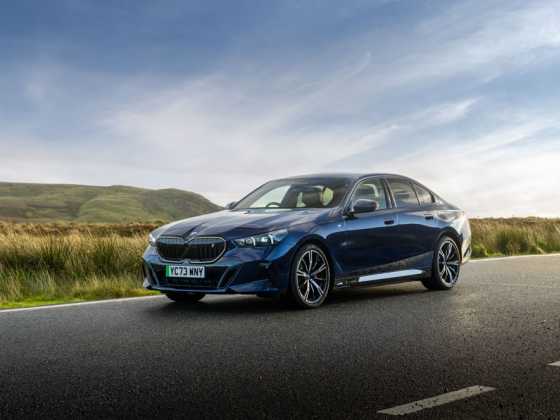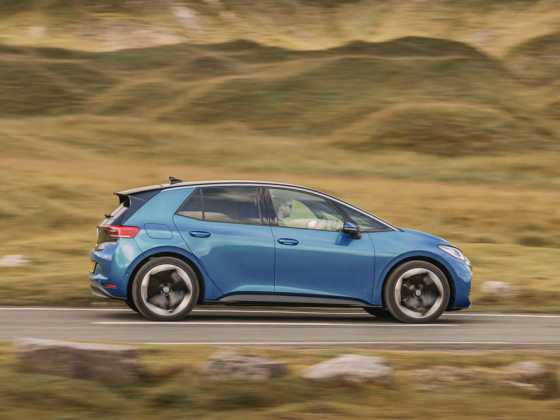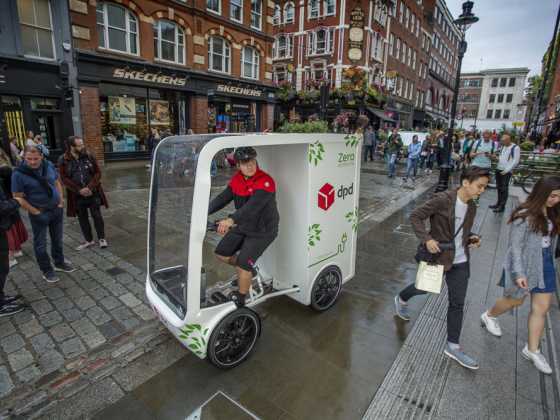Panel discussion: Mobility and air quality

Looking at new models of ‘business mobility’ can improve air quality and ease congestion by taking vehicles off the road and facilitating the use of zero or ultra-low-emission vehicles. Our panelists discuss
Poor air quality in the UK is said to be responsible for 40,000 early deaths a year in the UK. As such, the government has been taken to court three times for failing to adequately address the problem.
The government’s proposed air quality strategy says that ‘the most immediate air quality challenge is tackling the problem of nitrogen dioxide (NO2) concentrations around roads’ and that ‘road transport is responsible for some 80 per cent of NOx concentrations at roadside, with diesel vehicles the largest source in these local areas of greatest concern’.
As such, the government is banning the manufacture of new, purely ICE vehicles from 2040, and is putting in place air quality improvement measures, such as clean air zones around the UK, as well as pumping money into zero and ultra-low emission vehicles and infrastructure.
New ways of travelling
Fleet operators make up a significant portion of road users, and therefore can make a positive impact on reducing harmful emissions by making sure they use the cleanest vehicles, drive them efficiently, and cut out unnecessary journeys.
‘Business mobility’ challenges traditional fleet ownership and looks at combining multiple modes of transport – such as car sharing, car clubs and public transport – into one journey, and accessed as one service. Vehicles, services and infrastructure need to be ‘connected’ so that live data can be shared on public transport, availability of car clubs, and so on. If convenient enough, this new way of travelling would negate the need to own a fleet of vehicles outright, which in turn, would mean less cars on the road, causing less congestion and less air pollution.
“Mobility solutions can reduce the number of vehicles on our roads and help improve congestion,” says Dan Regan, head of innovation at Lightfoot. “These models will bring huge benefit to society, improving air quality and noise pollution as we transition to new mobility models and future vehicles over the next 10-15 years.”
Stuart Thomas from the AA highlights the fact that many vehicles are idle for a significant proportion of the day and so mobility makes sense. He says: “Mobility-as‑a‑service offers a range of opportunities for businesses to make savings in moving from an ownership to a usership model of fleet management. Indeed, US transportation expert Paul Barter confirmed longstanding claims by urban planners that most cars are idle for 95 per cent of the time, indicating lengthy periods of non-use.”
Applying mobility to business travel, ACFO’s John Pryor says: “Employees on company business want a single stress free process for business travel. Connectivity, potentially via apps, providing a single online platform, could be used by organisations and their employees to find, book and pay for all travel and related costs. The more that is centralised and controlled, the better.”
Dan Regan adds: “In the same way private motorists can benefit from the cost savings that new models of vehicle ownership and transport solutions give rise to, the benefits available to fleets are significant. Pool car fleets in particular could be significantly reduced in numbers as fleet organisations recognise the benefits of mobility as a service.”
Electric vehicles
Electric vehicles are well-suited to new business mobility models, as they suit ‘short hop’ journeys, as John Pryor calls them. He explains: “If an employee needs to travel from London to Leeds for example, then it is best to travel by train. But, at each end of that journey a car may be required, for which electric vehicles are perfect.”
Zero and ultra-low emission vehicles are being pushed by the government in a bid to tackle air pollution. But concerns over range and the public charging infrastructure still remain a barrier for many.
Stuart Thomas says that 82 per cent of AA members say they have been deterred from purchasing an electric vehicle by the lack of charging points nationwide and that “there is a long way to go to reassure fleets that the route to an alternatively‑fuelled future will be a smooth one”.
However, one way to reassure those uncertain of electric vehicles is the data that they can generate on charge point locations and availability, journeys, range and battery life.
John Pryor says: “Drivers want assurance that they will not ‘break down’, whether that is due to a lack of charging infrastructure, chargepoints not working, or a vehicle running out of power. Live data and connectivity will help with all of those issues and help to convince drivers that electric vehicles are a viable alternative to traditional petrol or diesel vehicles.”
Knowing that they’ll be taken care of if a break down was to happen can also go a long way to reassure potential electric vehicle drivers. Stuart Thomas explains how the AA is preparing for the shift to electric mobility by training all of its patrols to be able to respond to and assist owners of electric vehicles.
Dan Regan meanwhile shares how Lightfoot’s technology is evolving to help take any uncertainty out of electric motoring: “We’re currently developing the next generation of the Lightfoot vehicle diagnostics platform, which will grow to be able to automatically detect, diagnose and notify the driver of faults or issues with their electric vehicles.
“One such issue that can be reported remotely is low battery charge – so you can be warned via your mobile phone before you even set off in the morning that you may not have enough charge to complete your journey to work. Even better, it could warn you that you‘ve parked your car in the evening and forgotten to plug it in to charge.
“There’s also the opportunity for Lightfoot to detect journey patterns, suggest useful charge points for you along your usual routes, or even suggest routes that may use less battery energy.”
Stuart Thomas goes on to say that despite concerns over electric vehicles, given the government investment in the charging infrastructure, “63 per cent of businesses expect to embrace electric vehicles within five years”. This is according to the second annual Operational Fleet Insight report, produced by the AA and BT’s Fleet Solutions.
Drivers
Aside from using cleaner vehicles, how they are driven is a major factor in how polluting they can be. Harsh braking, idling and speeding can all use up excessive fuel and increase emissions.
Fleet operators need to have insight into the driving style of their employees, as well as how the vehicles performs and what types of journeys are undertaken. Technology and connectivity gives fleet managers that information so they can identify where changes should be made.
Dan Regan explains: “The majority of vehicle emissions are generated during acceleration events, with harsh or unnecessary acceleration causing the highest levels of emissions harmful to health, whilst smoother driving creates the least emissions.”
Dan explains that using the Lightfoot’s connected vehicle technology can incentivise a smoother, safer driving style, as well as a potential 20 per cent reduction in harmful emissions.
Keeping vehicles running at their optimum can also help minimise emissions. Stuart Thomas says: “Connected car technology can ease the process of vehicle repairs for fleet managers. Rather than having to go through the service history of every vehicle on the fleet, managers can use connected car technology to automatically alert them when a vehicle requires servicing or upgrades. Journey planning capability can then be applied to ensure the vehicle is serviced in the most convenient location. This not only saves the fleet manager time and reduces downtime for employees, it also keeps all fleet vehicles roadworthy in a manner which is entirely hassle-free.”
Mobility-as-a-Service
At the end of 2017, the government launched an inquiry into the benefits and barriers of Mobility as a Service (MaaS), where multiple modes of transport are combined and accessed as one service.
ACFO has responded to the inquiry, suggesting that employees have individual ‘mobility cards’ that could be used to access all forms of travel, fed from an app that could plan and charge costs accordingly.
John Pryor explains further: “Mobility Cards issued to individual employees would enable them to select the most appropriate model of travel and pay for journey to meet personal and business circumstances.”
In its submission to the inquiry, ACFO also highlighted that taxation was an issue that MPs needed to consider if MaaS was to be adopted within the corporate sector. John Pryor explains: “If a company is supplying a mobility card to employees, would it be taxed on the cash element of the value that the company was paying as with other amounts, medical or dental charges? Any support that would encourage companies to offer this benefit for wider adoption would be beneficial.”
Dan Regan says that the government has shown great support for UK industry to develop mobility solutions based on connected and autonomous vehicles. He says: “The dedicated body, the Centre for Connected and Autonomous Vehicles (CCAV), is working with the government’s innovation funding agency, Innovate UK, to fund and support technology developments and surrounding business models in the UK. Their aim is to make the UK a leader in this new area of transport innovation. The types of technology and innovations for which they’re supporting the growth and incubation in the UK will be what form the mobility-as-a-service models of tomorrow. Leading the way in this area will bring about significant cost savings, congestion reduction and emissions reductions in the UK, hopefully making our country a prime example of how MaaS can be adopt.”
As connected vehicles become common place on our roads, more visibility is needed for the industry on the degree of risk this could bring to businesses, believes Stuart Thomas. He says: “As autonomous and connected vehicles become increasingly popular on our roads, they do bring with them a greater degree of cyber security liability for businesses. The government has already issued a new set of guidelines to encourage car manufacturers to make vehicle cyber security a priority, with minimum protections established to protect drivers from such risks as data theft or loss of vehicle control.”
Last mile logistics
Another area where mobility solutions and connectivity can transform operations is in last mile deliveries. With city centres congested, polluted and difficult to park in, the last leg on a delivery journey can be transformed by looking at new models of working.
Electric delivery firm Gnewt Cargo, for example, is working with the Mayor’s Office in London to test different electric vehicles for last mile logistics, testing key scenarios such as manoeuvrability, range and environmental performance.
John Pryor comments: “We will see more trunking vehicles deliver goods to a central location in an urban area and then electric vehicles used to distribute those goods to businesses and homes.
Goods need to be moved around cities and it is clear that they could be transported more efficiently and in more environmentally‑friendly ways than in diesel vans or HGVs in stop‑start traffic congestion.”






